We do so many cool things in P52 and this idea is one a lot of the photographers are picking up on.
We are going to have a fun little ‘assignment’ to shoot 24 frames of film in May. Just 24… but we want all of them to be ‘good shots’. What started as a one shot per day for 24 days morphed rather quickly into simply shooting 24 frames… not necessarily one per day. Quality is more important than the surreptitiously applied time frame of one per day.
And what is the point?
The point is to look at making an image as something important, something that can take some time to do. Without the ability to ‘check the screen’ we have to learn to trust our guts.
We also have to make very sure – very DAMN sure – we have the shot we want in the frame. Check the composition, then check the corners, then check it all again. Whether shooting 35MM or 6×7 all of the photographers will be treating the frame as though it was 8×10… taking their time to make sure the image in the lens is what they want to commit to.
One click.
Move on.
I have been asked about what cameras would be good for beginning film shooters.
I have some opinions on that (and I know you are all shocked… shocked to hear I have opinions on something), and here they are:
While I personally think that just about any old film camera will work for this project and almost anything else you want to do, I do have some favorites.
[EDITED TO ADD: If you have an old camera and need an instruction manual to figure it out, here is a resource for you. Yes, your eyes may bleed from the web design, but the content will make you smile.]
Nikon F2 Photomic.
Here is one for about $150, but they can run up to $600 depending on how nicely they are cared for. A very simple camera with a nice feel in the hands, the F2 was a staple of commercial and editorial shooters for a decade. Simply a beautiful machine. Manual focus.
Nikon F3
This was their flagship camera and the nicest camera I have ever owned. I love my F3. Light and smaller than the F2, it also has one of the best meters ever put into an SLR. I have found exposures running to about 30 minutes with it. The camera also has a mean “Auto” feature for aperture value shooting. An Ebay favorite, they run from about $200 to upwards of $600 again depending on how meticulously they were cared for. Manual focus.
Nikon FM2
A staple in every Nikkon shooters bag back in the day. Why? Flash sync of 1/250 – twice as fast as the F3 sync due to vertical curtains. This is also one of Nikons best cameras. They were rugged and sure, and very easy to handle. You can pick up a Nikon FM for about $150 – $500. (Yeah, and a bit more – they are quite popular film cameras).
Nikon F4
Their first autofocus camera. Big and versatile. It is a coveted camera for a lot of film shooters who rely on autofocus. These are actually less than the F2/F3 cameras on Ebay. Auto focus.
Canon F1
I never used it, but I knew a lot of guys who loved it. This is a ‘tank’ of a camera. The F1 is a Manual focus camera. Heavy and solid. They run about $300 – $500 on Ebay.
Canon AE1
No list of film cameras would be complete without one of the classic film cameras of all time, the Canon AE1. Program mode, fast shutter speeds and a body that just goes and goes and goes. They run from about $100 – $250 on Ebay. The AE1 is a manual focus camera.
Canon EOS Cameras
I purchased the EOS 1 the same month it was released… amazing camera and I still use it. The feel in my hand was simply amazing. I highly recommend these babies… and if you are a Canon shooter, you will feel right at home with the wheel on the back for adjusting the exposure. From about $200 to $500 depending. I have both the EOS 1 and the EOS 3N… lovely and wonderful cameras. These are both auto focus cameras.
MEDIUM FORMAT CAMERAS
I love shooting the big boys… and here are the ones I am most familiar with. All of these are manual focus cameras.
Mamiya RB67 (and the Mamiya RZ67 – not pictured)
These are beasts of a camera. Very heavy, and well suited for tripods (unless you have upper body strength to spare). They make a 6x7cm image on a roll of 120 or 220 film, and you must have the correct film holder for either one of those. This means 10 shots on a roll of 120 and 20 shots on a roll of 220. The other feature is that the lenses are mounted on bellows, so they are focused by moving the bellows in and out with the wheels on the side, not by twisting the lens.
One of the features of this camera is that the back rotates so the camera is always shot in the same position, while the photographer rotates the back for a vertical image. They are affordable and present a whole new way of making images for those who are used to shooting SLR’s of any kind.
Bronica GS1
These very sleek medium format cameras also shoot 6×7, but the photographer must turn the camera from horizontal to vertical. The lenses are also focused with the traditional twist. There are a whole host of accessories for this camera, from lenses to prism finders. If you are looking for something with a lot of punch, but not as heavy as the RB67, look at these sweet cameras.
Running from about $350 – $700 on Ebay.
Hasselblad
The big tuna… The Hassies are classic cameras that take a square 6×6 format image. That is 12 images per roll of 120. You must have the correct film holder for both the 120 and the 22o films. Extensive lens collections and amenities are found for this prestigious camera. They are running from about $500 to $900 depending on the condition.
THE 645 FORMATS
These are remarkable cameras as well as lighter and easier to carry than the ones above. Because of the way the film loads, the image is 6cm x 4.5cm – which results in 16 images per roll versus the 12 of the square format cameras.
All of these are great deals as well, with lots of lenses and additional tools available.
Bronica 645 – these run from about $250 to $600.
Mamiya 645 – these run from about $250 – $600 as well.
Pentax 6×7
An esoteric favorite, the Pentax 6×7 handles like a giant SLR. There is an extensive lens line and many accessories. The lenses were considered second to none. This is still one of the cameras I coveted but never owned. It may be just the thing for you if you want to move into MF Film and like the handling of an SLR. This camera shoots a 6×7 image (10 per roll of 120). These cameras are in high demand, running between $500 to $1200 with a lens.
(Edited to Add)
Yashica Mat TLR (Twin Lens Reflex
This is a 6×6 image camera (12 shots on a roll of 120) and is also a unique type of camera. You look through the top lens while the image is taken by the bottom lens. This camera focuses on bellows so there is no internal movement of glass within the lens. Inexpensive and quite fun to shoot. You are already used to shooting with one… the act is very similar to chimping, looking straight down into the camera to see the image on the ground glass. Image is reversed. From $100 – $400 on Ebay.
Shooting Film
Most of the film shooting I do these days is on C41 films (color negative). Most of the film I shot back in the day was chrome (E6), which is transparency film. I rarely shoot that these days as transparency and digital look so much alike. Color negative film has a different patina, a different color space than transparency.
I shoot Ektar 100 film in both the 35MM and the 120 roll sizes. Fine grain and very nice color range.
And I shoot Kodak Portra as well. Note, Portra comes in ISO 160, ISO 400 and ISO 800 flavors. I shoot the 160 ISO film at ISO 100… always have. I find that this film can take a bit of over exposure much better than any underexposure.
It is also fun to shoot traditional black and white ON black and white film. I recommend a set of filters if you do, but for many projects, filters are not needed. (I am referring to Red, Green, Yellow and Amber filters for darkening skies and lightening greens in landscape.)
My favorite Black and White films are the Kodak T-Max line, an Ilford film or two and a couple of Fuji’s.
NOTE: You can get all of these films in higher ISO’s, but I like the ISO 100 flavors for a lot of reasons. Choose the ISO range that works for you.
Shooting with film, things to remember;
- You cannot see what you just did. Don’t try.
- You must shoot the whole roll at the same ISO
- When you get the film processed, it is somewhat fragile and can scratch. Be careful with it.
- Film has more latitude, but prefers to be over exposed than underexposed
- I prefer to get my scans at the time I process the film. Yes, it is more expensive, but I do not spray and pray with film.
Well – that is a very short list of cameras and film that I use for shooting film images. Use the comments below to share your favorite camera and or film… and let us know why.
See you next time.

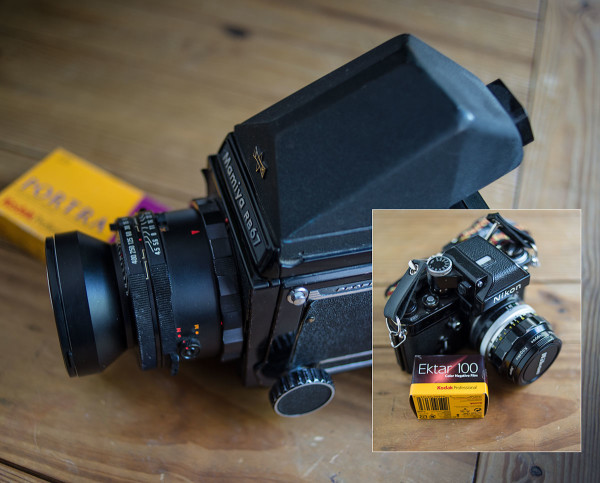
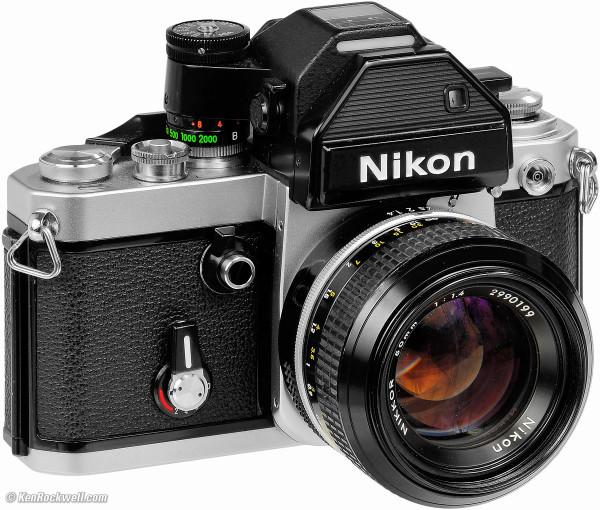
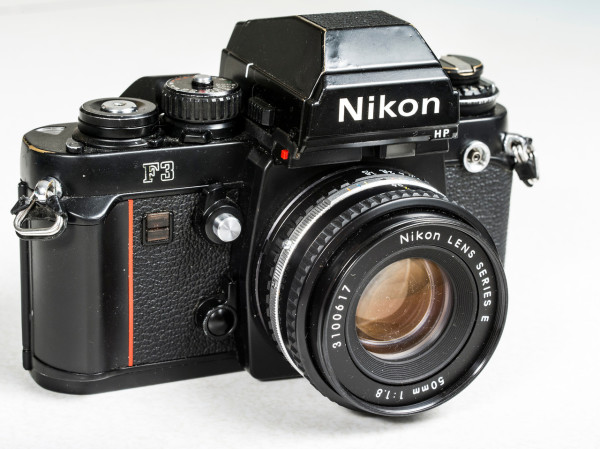
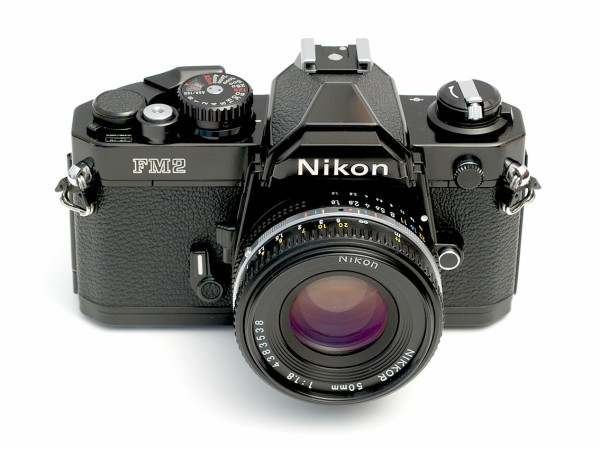
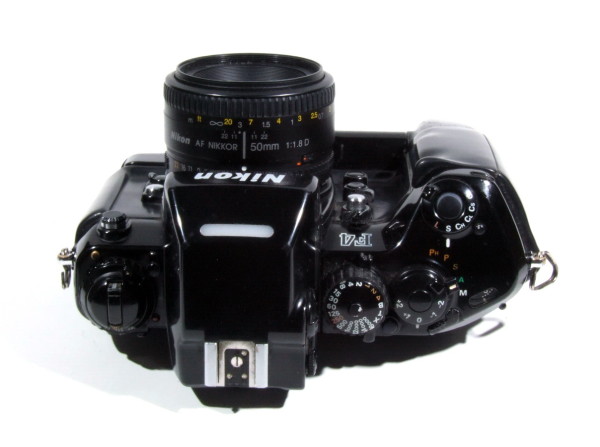
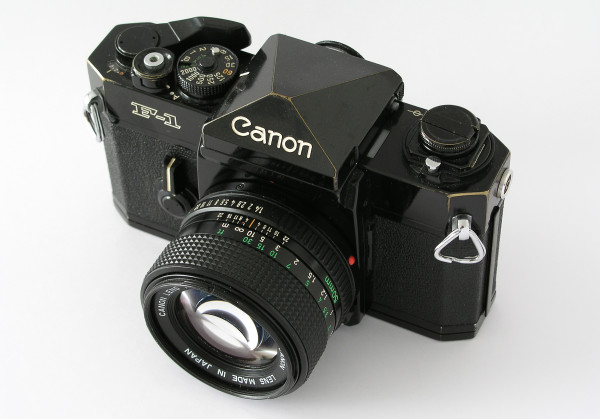
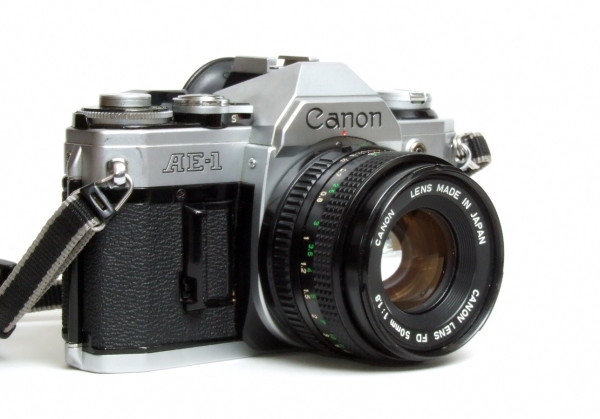
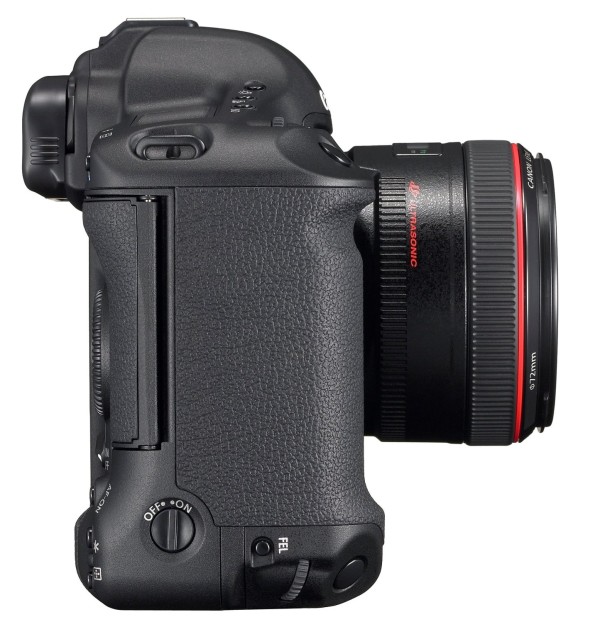
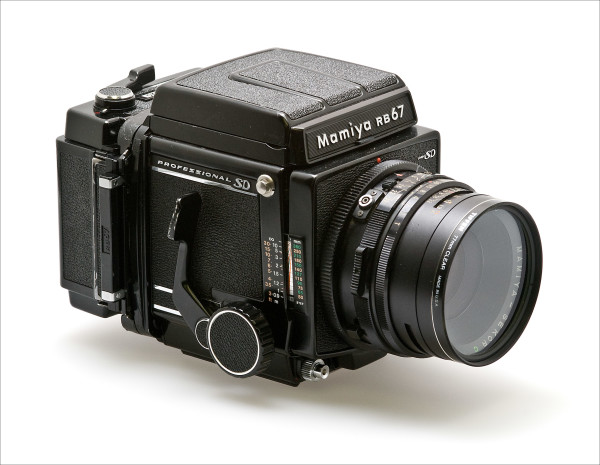
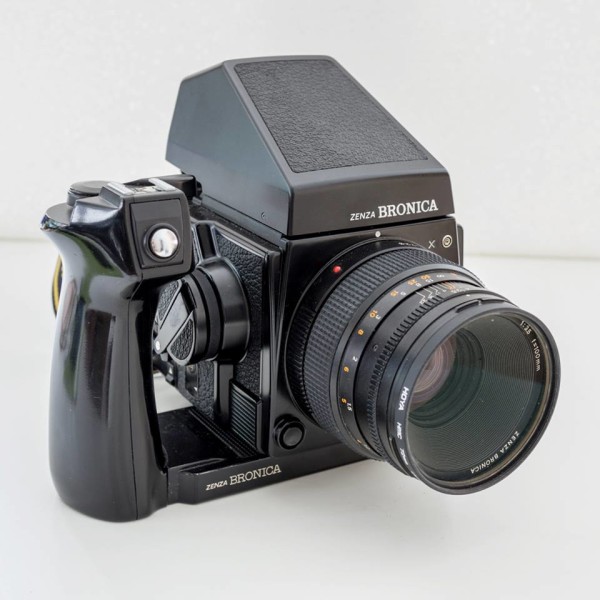
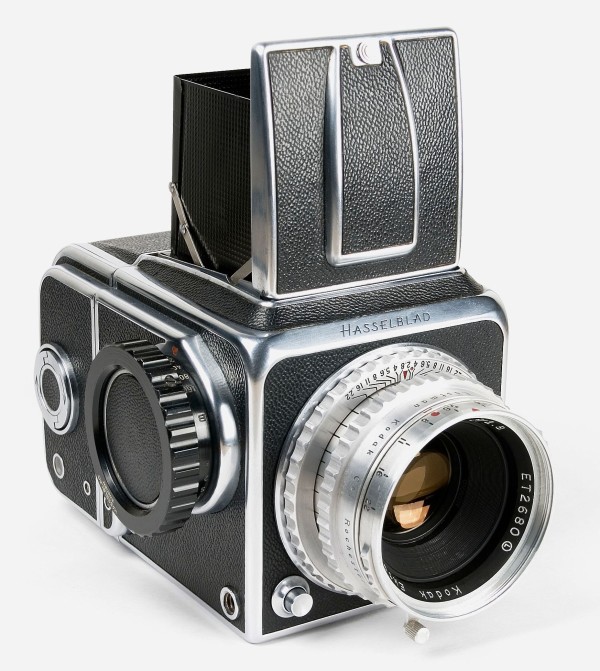
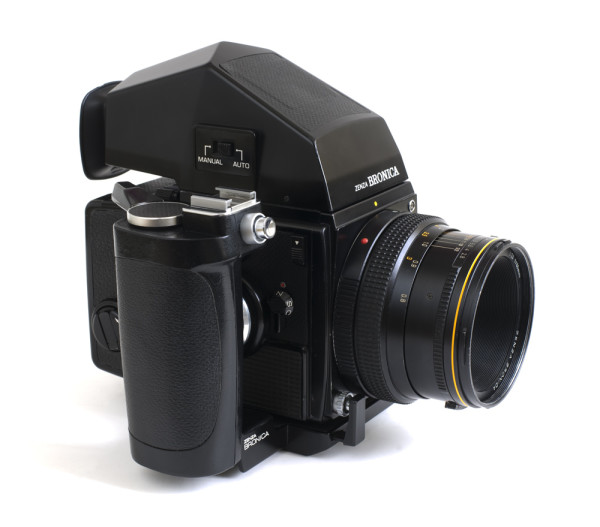
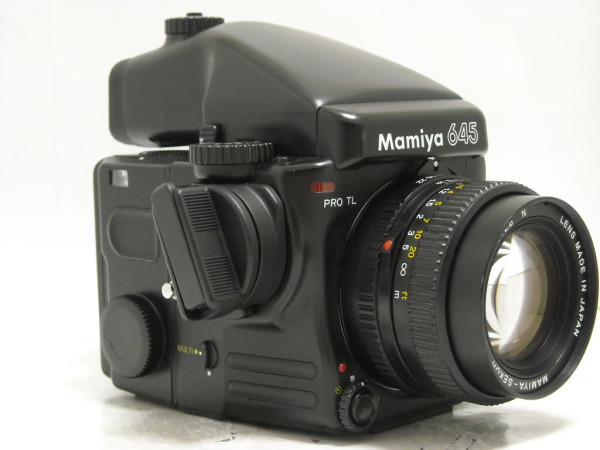
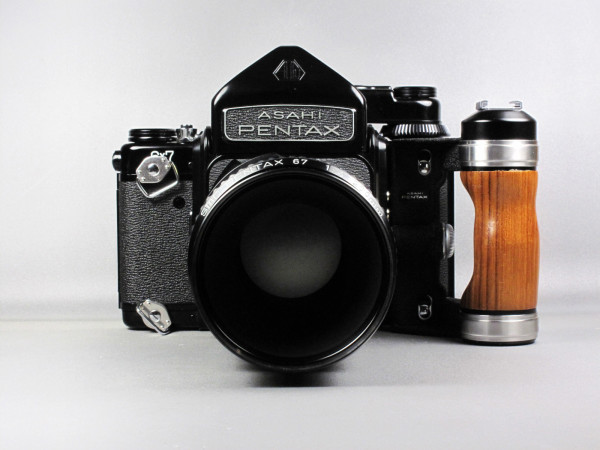
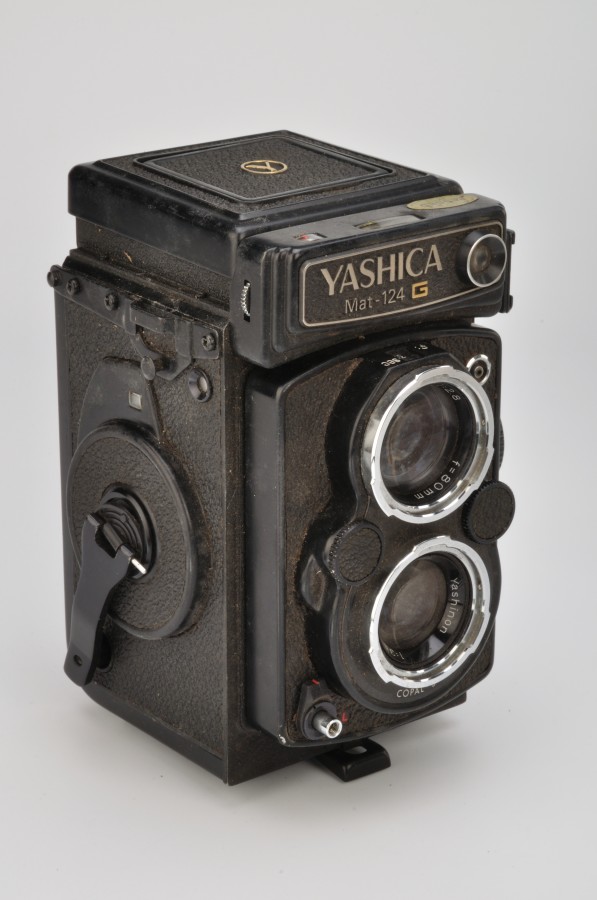

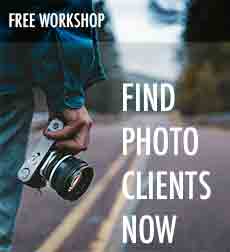
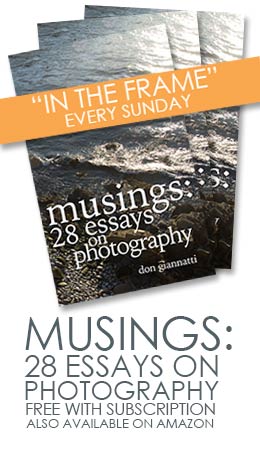
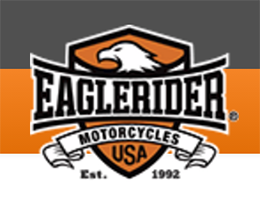
Nice to see the Nikons there. I love my old Nikkormats, especially for street photography. They’re probably my absolute favourites.
I love any fully mechanical 35mm F-Mount or M42 mount bodies, though (but I don’t hold it against my N90s or A1). 😉
Would love to get my hands on a GX680III though. Still waiting for one to come up at the right price.
I really enjoy shooting film. I get it developed and scanned at Indie Film Lab (http://indiefilmlab.com/) for about $18 a roll. I have also used photoworkssf.com and they charge less, but, the scans are better at Indie. If you’re only doing a one off, and don’t care about scan quality too much, you can just take color film to Walgreens and they’ll do it in an hour for about $10 if you want it developed and scanned only. The scans are very small to boot.
I used to shoot Canon digital before I jumped to an OMD EM5 for it’s much smaller weight. I did keep a couple of the lenses and picked up a few different EOS cameras to use with the lenses off Craigslist for $25. It’s hard to beat using them as beater cameras that do yeomans work for pretty much free. I’m sure you can do the same if you’re a digital Nikonian.
I love shooting my Holgas and I’ve been shooting with a Leica M5 in 35mm too. I may sell the M5, I’m not convinced yet that it’s so much more wonderful than the Canons I talked about above.
For medium format, I have a Bronica SQ something that is a pleasure to shoot and I got it for about $250 off Craigslist, as I recall. I have a GS1 sitting on the shelf that I should probably sell. The negatives are amazing on these old medium formats cameras. Systems that would have cost $1500- $2000 back in the 80s are available for a relative song. I’ve had a few TLRs and they’re fun to shoot with too. I gave a special friend a Rolleiflex TLR and she loves it. I kept a Yashica TLR for when I’m in a TLR mood. I also have a Fuji 645 that’s spending more time on the shelf than it should. The advantage to the 645s is the negatives are very similar aspect ratio to the 35mm stuff we’re used to shooting in digitals these days.
I buy film at B&H or http://www.freestylephoto.biz. Freestyle has their house brand labeled as Arista for pretty cheap, relative to the stuff from the same manufacturer they also sell. Freestyle Arista Premium in 35 mm is Kodak’s Tri-x, a classic film, and it’s about half the price of Tri-x. You can tell it’s Kodak as it’s made in the US. The Arista film made in the Czech republic is by Foma. Generally, Amazon is much more expensive than B&H or Freestyle.
I like shooting film as I have to commit to each shot. Basically, it’s about a dollar a pop, so, I don’t shoot willy-nilly, but, I don’t let that hold me back too much either. A man has to have a vice. I have found my keeper rate to be in the 50% plus range, much better than my digital which is maybe 10%. I have found that the shot discipline of film is bleeding over to my digital so I don’t just spray and pray as much as I used to. I generally like to shoot black and white film, and generally Tri-x for it’s timeless appeal. I like to use Portra 400 at 200 or even 100. These guys did a pretty thorough review http://www.twinlenslife.com/2010/12/its-our-favorite-time-of-light-new.html and most of the wedding film guys are shooting Portra 400. The only drawback is it’s not cheap, but, it’s not horrific either. Especially since it’s kind of made for scanning and a good lab, like Indie, can get great results. Jonathan Canlas is pretty much “Mr Film” and he raves about Portra.
As you can see, I’m a little enthusiastic about film …
Sounds like you are enjoying your film experience, Dave. Would you like to chat with me about how you shoot it and some of the tips and tricks you have found along the way? I can set it up for next week if you have time.
I’d love to do that Don. It’d have to be Friday or the weekend, my day job has me out of town til then!
Pentax MX – small, lightweight 33mm SLR; no batteries required (except the meter)
Contax G2 – awesome, lightweight (pseudo)rangefinder
Both very nice cameras. I never shot with the Contax or a Leica, but they are both on my list of ‘someday soon’… heh.